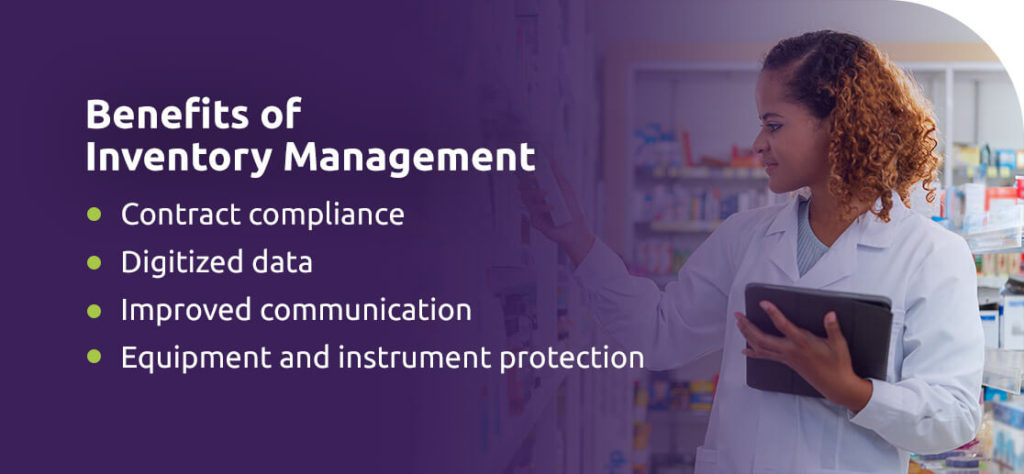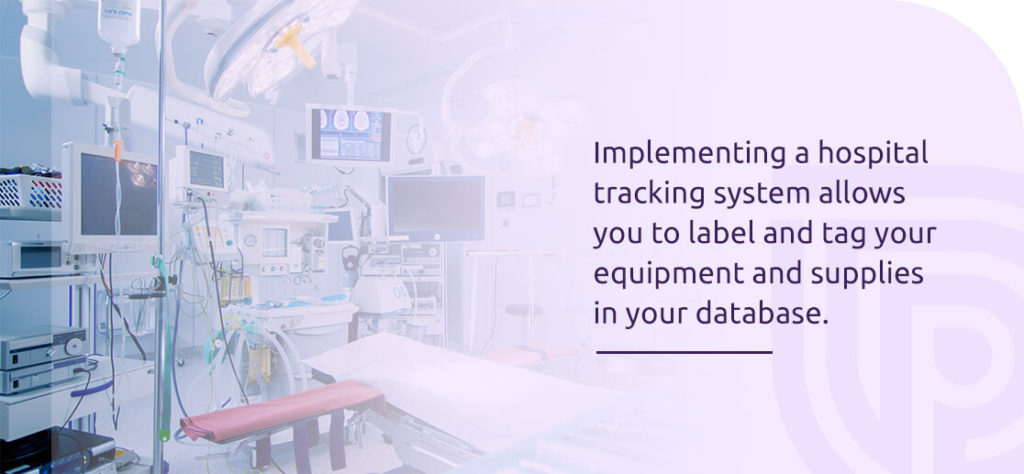Skip To Sections
Healthcare inventory management is incredibly important in medical facility processes. Inventory management systems can help hospitals and other medical organizations streamline their processes to save time and money while providing quality care to patients.
A streamlined inventory management system makes it easier to track equipment and supplies, which improves communication between departments, reduces theft, increases productivity, maintains compliance, and reduces the time it takes for medical personnel to sign equipment in and out for use. When you improve your medical supply inventory management, you improve several processes within your organization.
Take a proactive step towards efficiency, cost savings, and improved patient care.
Healthcare organizations must keep track of various inventory, including:
While a simple Excel spreadsheet may seem enough to manage inventory successfully, it’s actually more effective to implement a streamlined inventory management strategy. An efficient management workflow can help medical facilities save time, money, and effort. Medical facilities are pressured to reduce costs, and streamlining inventory management is one way to cut spending.
With proper medical inventory tracking and planning, hospitals can save time and money. Planning out the supplies needed can save $1,800 per surgery and precious minutes of time, for example.

Healthcare inventory management is a workflow that tracks a health system’s orders, purchases, inventory, payments, health product sales, and prescriptions. An effective workflow will help an organization avoid supply and monetary losses with an accurate and updated product and supply log. Inventory management also provides the following benefits:
Many hospitals lack a standardized inventory management process, but a standard process can significantly decrease spending. There are two different types of healthcare inventory management, so it’s important to understand the benefits and disadvantages of both. Healthcare facilities can manage inventory using one of the following methods:
Periodic inventory requires employees to update inventory data manually. For this method, employees take inventory periodically. For example, they may take inventory once a week or at the end of a similar period of time. While this method may be sufficient for small healthcare facilities, it is not ideal for hospitals and larger healthcare organizations.
This inventory management method leaves significant room for error and takes time away from other important tasks. Larger healthcare facilities benefit more from the perpetual inventory method.
The perpetual inventory management method continually and automatically updates inventory data. The advanced software needed to operate a perpetual inventory system can cost more than practicing manual periodic inventory, but its benefits surpass its cost. Perpetual inventory systems account for important details such as purchases, deliveries, additions, and subtractions. They allow medical staff to track equipment use at all times so all supplies are accounted for.
Inventory management is important in hospital and medical organization settings. With proper inventory management, you can increase productivity and know where your medical equipment and supplies are at all times. To improve your hospital inventory management, implement the following best practices:
Healthcare providers can often misplace supplies or equipment they already have. This can occur when someone mixes up inventory or delivers supplies to the wrong person or place. As a result, employees may end up ordering redundant supplies and equipment to replace misplaced items.
Inventory management can ensure all supplies and equipment pieces are easily located at all times. It can help hospital staff deliver supplies to the correct individuals and return equipment to the correct location when they are finished using it.

Implementing a hospital tracking system allows you to label and tag your equipment and supplies in your database. You can add locations to track where items are and where they should be at all times.
When equipment has tags with labels, barcodes, and identification numbers, staff can easily check pieces of equipment out for use or sign them off to other staff members.
Using a radio-frequency identification (RFID) system makes it easier to locate who last used a piece of equipment if it goes missing. This tagging system can also increase productivity and efficiency and help protect equipment and supplies from theft. Tagging equipment also streamlines its maintenance process and helps you monitor its life cycle.
Collecting data can provide significant insight into existing usage patterns. It’s important to track how much equipment and supplies employees use so you can adjust accordingly. By collecting and analyzing data, you can avoid ordering only the supplies that you need, and you can openly share how your department is progressively saving money.
When you implement a data-driven approach in your supply management method, you can make informed decisions and collaborate effectively with clinical leadership.
Manually managing inventory can lead to errors, missing supplies, overspending, and inefficiency. Implementing a clinical inventory management system can eliminate errors and create a more consistent process that makes it easier to document usage, prepare reports and maintain compliance. A supply management system can help your hospital or medical facility save time and money by protecting your equipment and allowing you to find its location at all times.

An effective inventory management system can significantly improve your hospital or medical facility’s processes. Implementing an inventory management system can help you save money on supplies, locate equipment at all times, prevent theft, increase productivity and maintain compliance.
Perpetual inventory management is much more effective than periodic or manual inventory management, so having advanced software to track your supplies can significantly benefit your healthcare facility. When you implement best practices for inventory management, you help medical staff focus on important tasks by making equipment and supplies readily available.
Pathstone Partners can help you streamline your processes and make informed decisions with medical inventory management solutions. Our consultants will collaborate with your medical leadership team to drive value and results. We will help you bridge communication gaps and achieve consistent cost savings so you can provide quality patient care as efficiently as possible. Consult with Pathstone to learn more about our healthcare consulting solutions and how we can help you manage your inventory effectively.
Find Your Healthcare SolutionMeet Our Expert Consultants
{
“@context”: “https://schema.org”,
“@type”: “BlogPosting”,
“mainEntityOfPage”: {
“@type”: “WebPage”,
“@id”: “https://www.pathstonepartners.com/blog/best-practices-for-healthcare-inventory-management/”
},
“headline”: “Best Practices for Healthcare Inventory Management”,
“description”: “Healthcare inventory management is incredibly important in medical facility processes. Inventory management systems can help hospitals and other medical organizations streamline their processes to save time and money while providing quality care to patients. A streamlined inventory management system makes it easier to track equipment and supplies, which improves communication between departments, reduces theft, increases productivity, maintains compliance, and reduces the time it takes for medical personnel to sign equipment in and out for use. When you improve your hospital inventory management, you improve several processes within your organization.”,
“image”: “https://www.pathstonepartners.com/wp-content/uploads/2022/07/01-benefits-of-inventory-management.jpg”,
“author”: {
“@type”: “Organization”,
“name”: “Pathstone Partners”,
“url”: “https://www.pathstonepartners.com”
},
“publisher”: {
“@type”: “Organization”,
“name”: “Pathstone Partners”,
“logo”: {
“@type”: “ImageObject”,
“url”: “https://www.pathstonepartners.com/wp-content/uploads/2021/10/pathstone_partners_logo_final_rgb-e1634054351430.png”
}
},
“datePublished”: “2022-08-04”,
“dateModified”: “2022-08-18”
}

This article was authored by Yera Patel. Yera is a senior associate with expertise in performance improvement and non-labor cost reduction engagements at Pathstone Partners.
